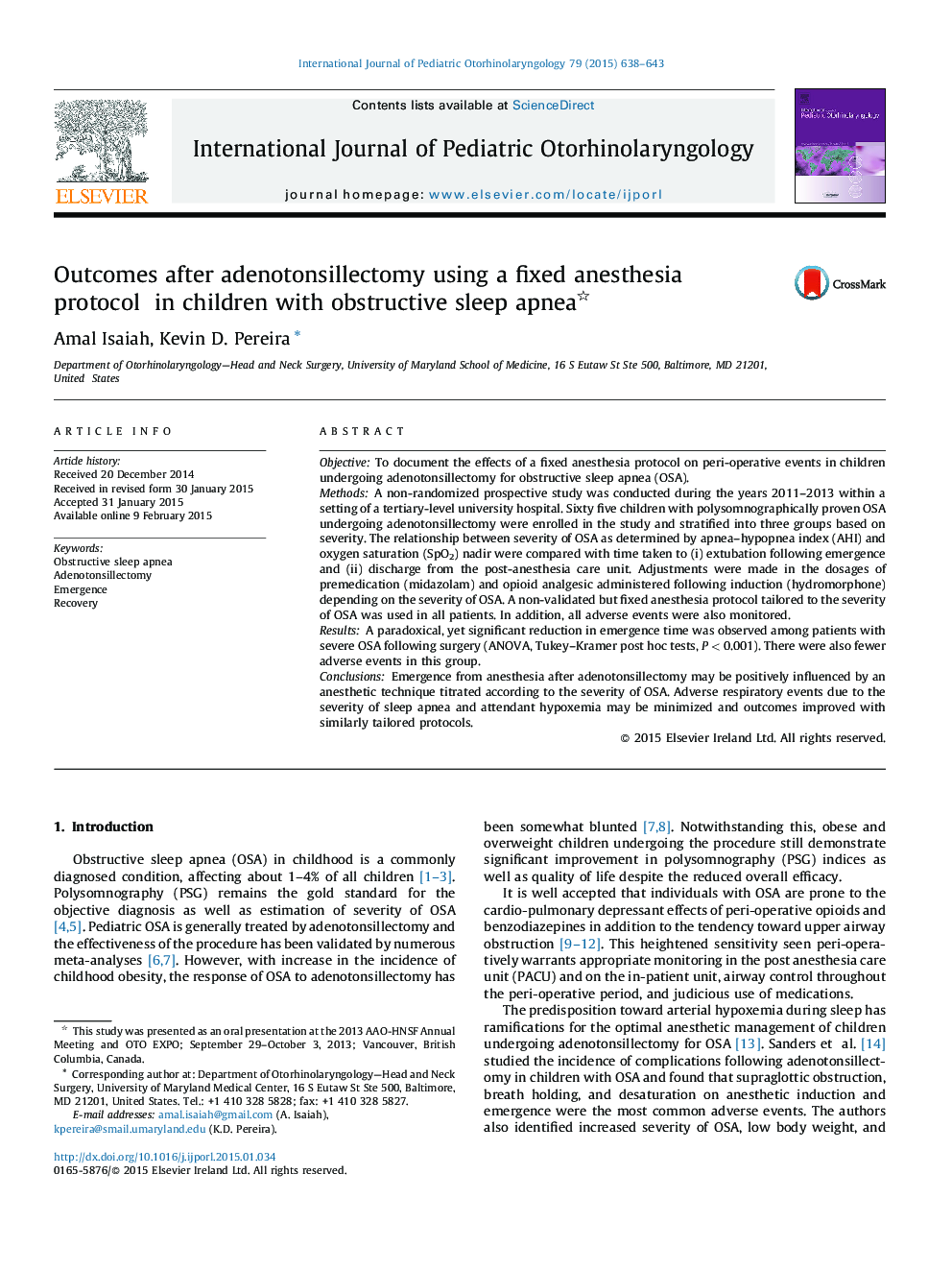| Article ID | Journal | Published Year | Pages | File Type |
|---|---|---|---|---|
| 4111875 | International Journal of Pediatric Otorhinolaryngology | 2015 | 6 Pages |
ObjectiveTo document the effects of a fixed anesthesia protocol on peri-operative events in children undergoing adenotonsillectomy for obstructive sleep apnea (OSA).MethodsA non-randomized prospective study was conducted during the years 2011–2013 within a setting of a tertiary-level university hospital. Sixty five children with polysomnographically proven OSA undergoing adenotonsillectomy were enrolled in the study and stratified into three groups based on severity. The relationship between severity of OSA as determined by apnea–hypopnea index (AHI) and oxygen saturation (SpO2) nadir were compared with time taken to (i) extubation following emergence and (ii) discharge from the post-anesthesia care unit. Adjustments were made in the dosages of premedication (midazolam) and opioid analgesic administered following induction (hydromorphone) depending on the severity of OSA. A non-validated but fixed anesthesia protocol tailored to the severity of OSA was used in all patients. In addition, all adverse events were also monitored.ResultsA paradoxical, yet significant reduction in emergence time was observed among patients with severe OSA following surgery (ANOVA, Tukey–Kramer post hoc tests, P < 0.001). There were also fewer adverse events in this group.ConclusionsEmergence from anesthesia after adenotonsillectomy may be positively influenced by an anesthetic technique titrated according to the severity of OSA. Adverse respiratory events due to the severity of sleep apnea and attendant hypoxemia may be minimized and outcomes improved with similarly tailored protocols.
